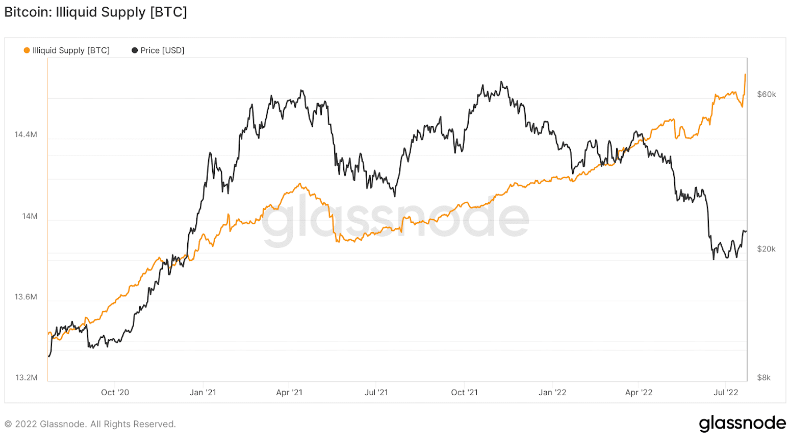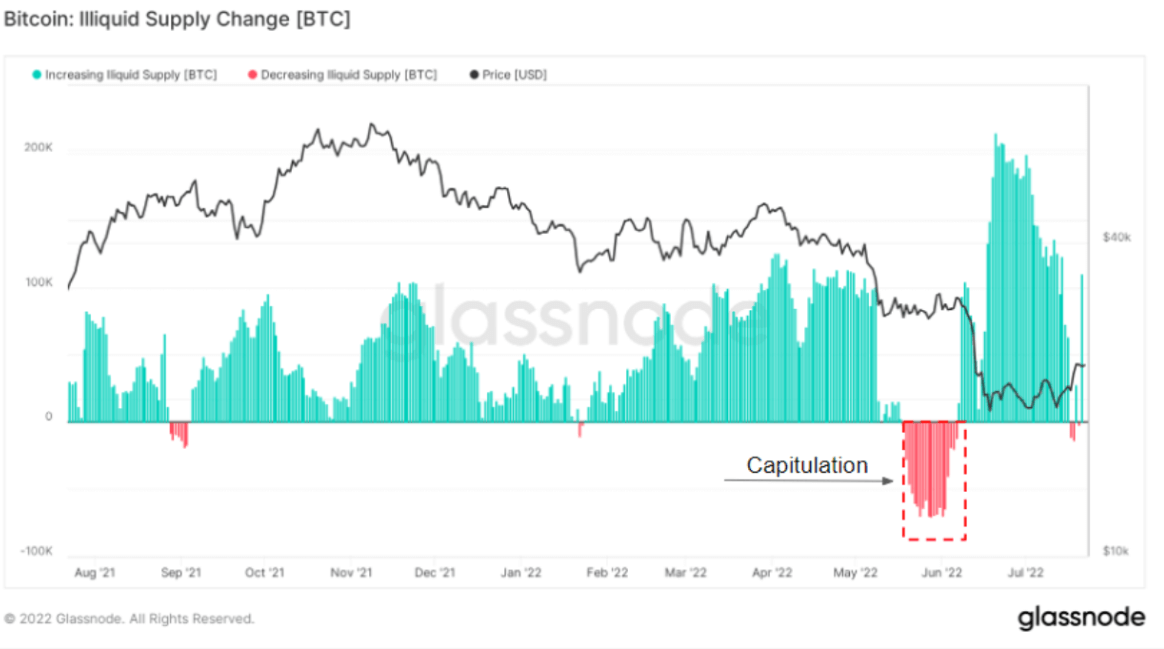Bitcoin’s increasing illiquid supply may spur more price volatility, data suggests
There’s no denying that the last seven odd months have been extremely bearish for the crypto market, with Bitcoin, the world’s largest cryptocurrency by total market capitalization, only witnessing year-to-date (YTD) money inflows worth just $14 million.
Furthermore, the flagship crypto’s illiquid supply ratio – i.e. the number of Bitcoins being moved out of exchanges and into “cold storage” wallets or app-based “hot” wallets – has been on the rise since the start of 2022.
To elaborate, there are currently over 14.8 million illiquid BTC tokens in existence, with this number having risen quite sharply (by roughly 500k) in the first half of the year alone. This is largely due to a number of macroeconomic factors surrounding the global economy (such as the recent Russian invasion of Ukraine, increasing crypto liquidations, rising inflation and interest rates, etc.).
It is also relevant to note that the total number of BTC in circulation is currently around 19 million, with around 900 coins being mined and added to the currency’s total supply pool per day.
In all, it is estimated that 76% of the cryptocurrency’s total supply can currently be classified as illiquid, which is quite staggering considering that more than 90% of all Bitcoin that could ever exist has already been mined.

This increase in illiquid supply is also supported by associated metrics such as Bitcoin’s “illiquid supply change”, which is the monthly (30-day) net change in the supply of the digital currency held by illiquid entities. This is important because the recent macro-level events surrounding the market – such as the insolvencies of key market players such as Three Arrows Capital, Celsius, Vauld and Zipmex – have resulted in consumers learning the importance of self-storage (ala ‘not your keys, not your coins’ ).
To this point, the graph below clearly shows that the general trend of investors moving Bitcoin to external wallets has been on the rise, especially after the aforementioned capitulations in June.

Bitcoin’s illiquid supply has been in a phase of continued accumulation for over six months, only to be interrupted last month. But, as shown above, the trend is once again on the rise, with more gusto than ever before. These sudden increases could have a negative effect on the supply dynamics of Bitcoin, potentially resulting in the asset’s price being met with a lot of volatility in the near to medium term. Therefore, it remains to be seen what the future holds for Bitcoin.



